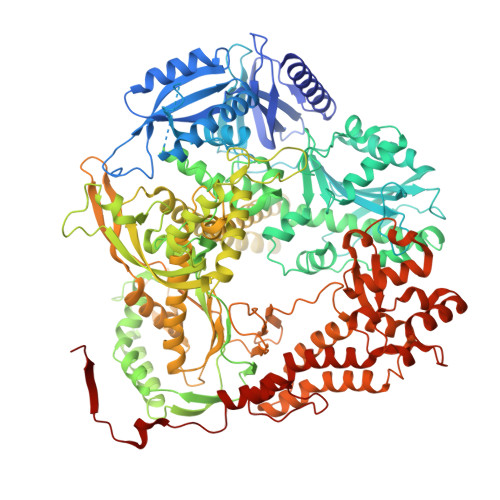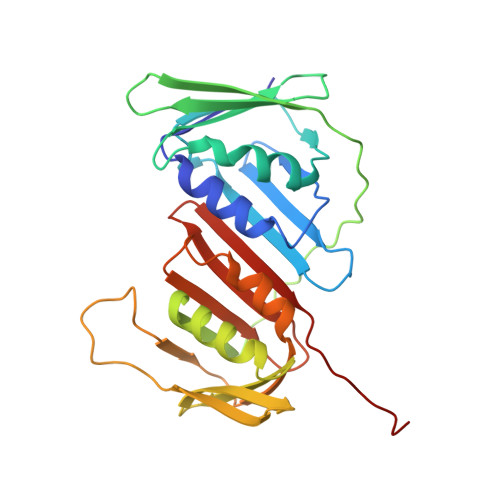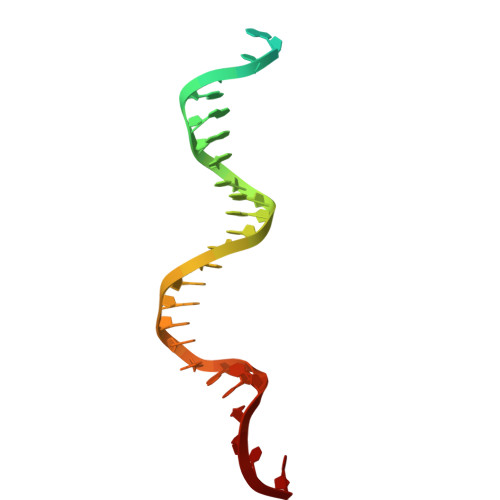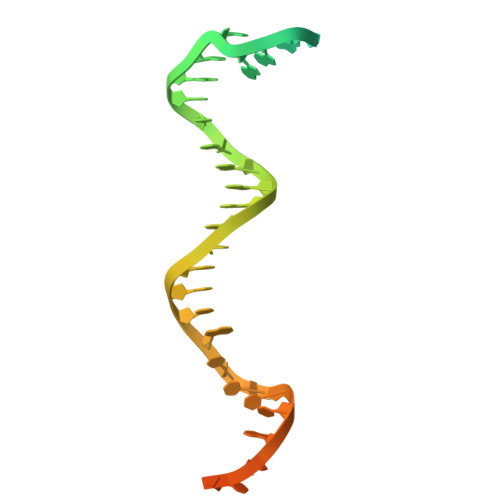The proofreading mechanism of the human leading-strand DNA polymerase epsilon holoenzyme.
Wang, F., He, Q., O'Donnell, M.E., Li, H.(2025) Proc Natl Acad Sci U S A 122: e2507232122-e2507232122
- PubMed: 40440070
- DOI: https://doi.org/10.1073/pnas.2507232122
- Primary Citation of Related Structures:
9NE6, 9NE7, 9NE8, 9NE9, 9NEA - PubMed Abstract:
The eukaryotic leading-strand DNA polymerase ε (Polε) is a dual-function enzyme with a proofreading 3'-5' exonuclease ( exo ) site located 40 Å from the DNA synthesizing pol site. Errors in Polε proofreading can cause various mutations, including C-to-G transversions, the most prevalent mutation in cancers and genetic diseases. Polε interacts with all three subunits of the PCNA ring to assemble a functional holoenzyme. Despite previous studies on proofreading of several Pol's, how Polε-or any Pol complexed with its sliding clamp-proofreads a mismatch generated in situ has been unknown. We show here by cryo-EM that a template/primer DNA substrate with a preexisting mismatch cannot enter the exo site of Polε-PCNA holoenzyme, but a mismatch generated in situ in the pol site yields three bona fide proofreading intermediates of Polε-PCNA holoenzyme. These intermediates reveal how the mismatch is dislodged from the pol site, how the DNA unwinds six base pairs, and how the unpaired primer 3'-end is inserted into the exo site for cleavage. These results unexpectedly demonstrate that PCNA imposes strong steric constraints that extend unwinding and direct the trajectory of mismatched DNA and that this trajectory is dramatically different than for Polε in the absence of PCNA. These findings suggest a physiologically relevant proofreading mechanism for the human Polε holoenzyme.
Organizational Affiliation:
Department of Structural Biology, Van Andel Institute, Grand Rapids, MI 49503.




















